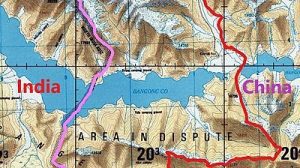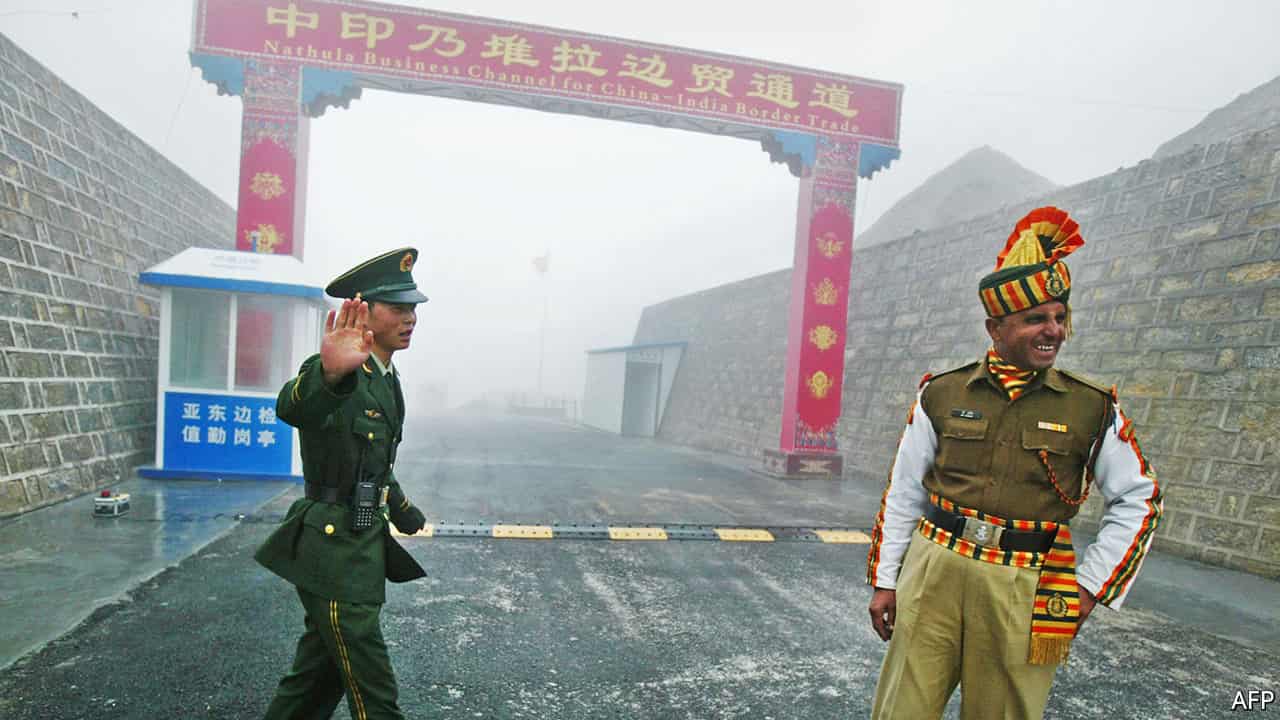It would be naive to assume that the month-long Indo-Chinese stand-off along the LAC can be resolved quickly through talks. Nothing short of their full withdrawal should satisfy India. There is a need for strong political direction from Beijing to the PLA to do that, opines Dr Navodita. An exclusive analysis for Different Truths.
 With official talks getting underway, the month-long standoff between India and China along the LAC in Laddakh and Sikkim have left many visionaries worried.
With official talks getting underway, the month-long standoff between India and China along the LAC in Laddakh and Sikkim have left many visionaries worried.
Given the differences between the situation now and previous incidents, it would be naive to assume that this stand-off can be resolved quickly through talks. The stand-off is at more than one location, including the Finger areas of the Pangong Tso, Galwan Valley and Gogra post in Ladakh and the Naku La pass in Sikkim, and it will require careful study to decide how to de-induct soldiers.
Given the differences between the situation now and previous incidents, it would be naive to assume that this stand-off can be resolved quickly through talks. The stand-off is at more than one location, including the Finger areas of the Pangong Tso, Galwan Valley and Gogra post in Ladakh and the Naku La pass in Sikkim, and it will require careful study to decide how to de-induct soldiers. Furthermore, a “status quo ante” will require that Chinese soldiers vacate areas where they have dug in for weeks now. Nothing short of their full withdrawal should satisfy India, which means that more than talks on the ground and by diplomats, there is a need for strong political direction from Beijing to the PLA to do that. Otherwise, India must prepare for a long-drawn stand-off, and manoeuvres aimed at ensuring China’s pullback.
In addition, even as the government tries to analyse the reasons for China’s aggressive action, it must introspect on signals it misread and warnings that went unheeded across its strategic command. If such skirmishes normally follow the melting of snowlines, for example, then why was the LAC not adequately manned in April-May? Serious notice should have been taken of China’s protests on the redrawing of the Jammu-Kashmir and Ladakh maps, as well as the impact of the Home Minister’s vow in Parliament to “take back” Aksai Chin. The Defence Minister has said that Chinese troops arrived in “heavy numbers” and therefore the government must also study what intelligence was received ahead of such movement, and when the action was taken upon it. Finally, why has the stand-off emerged at all, after the intense summit-level conversations in Wuhan and Mamallapuram to discuss building trust at the LAC? Given the government’s silence on events thus far, it is unlikely that it will put out answers to these questions publicly, but in any event, they must be sought.
There was little expectation that the videoconference on Friday, held between External Affairs Ministry officials in Delhi and their Ministry of Foreign Affairs counterparts in Beijing, and talks between the Leh Corps Commander with the South Xinjiang Military Region Commander, held in the Chushul-Moldo region on China’s side of the LAC on Saturday, would bear fruit immediately. However, statements from both sides that the talks will continue to indicate a desire to resolve the situation.
There was little expectation that the videoconference on Friday, held between  External Affairs Ministry officials in Delhi and their Ministry of Foreign Affairs counterparts in Beijing, and talks between the Leh Corps Commander with the South Xinjiang Military Region Commander, held in the Chushul-Moldo region on China’s side of the LAC on Saturday, would bear fruit immediately. However, statements from both sides that the talks will continue to indicate a desire to resolve the situation. The MEA and the MFA have also reiterated their commitment to abide by agreements between Prime Minister Narendra Modi and Chinese President Xi Jinping, which came after the last big stand-off, at Doklam in 2017, to not allow “differences to escalate into disputes”. During the Doklam incident, even after a meeting between the leaders on the sidelines of a G-20 summit, it had taken several high-level engagements to ensure a drawdown to the 73-day stand-off.
External Affairs Ministry officials in Delhi and their Ministry of Foreign Affairs counterparts in Beijing, and talks between the Leh Corps Commander with the South Xinjiang Military Region Commander, held in the Chushul-Moldo region on China’s side of the LAC on Saturday, would bear fruit immediately. However, statements from both sides that the talks will continue to indicate a desire to resolve the situation. The MEA and the MFA have also reiterated their commitment to abide by agreements between Prime Minister Narendra Modi and Chinese President Xi Jinping, which came after the last big stand-off, at Doklam in 2017, to not allow “differences to escalate into disputes”. During the Doklam incident, even after a meeting between the leaders on the sidelines of a G-20 summit, it had taken several high-level engagements to ensure a drawdown to the 73-day stand-off.
PM Narendra Modi and China’s president Xi Jinping had held an informal summit in April 2018 in Wuhan to improve ties between the two countries. A number of steps to be followed by both armies, when border patrols are face to face at the LAC, were decided, including that soldiers from either side would not point guns towards the other. However, things are looking very different with a few unofficial sources saying Chinese soldiers are patrolling in areas where once Indian soldiers patrolled. If this is the truth, why is the government not showing the clear picture? Moreover, is China to be trusted again with its promises and accords?
In the wake of COVID19 has China suddenly felt it has the power to violate terms and conditions decided with its neighbouring countries? …. It is a vulnerable time when India and her territorial integrity needs to be strengthened and the army needs to be kept on alert, especially as we have to battle out the pandemic and stop it from spreading among the armed forces.
In the wake of COVID-19 has China suddenly felt it has the power to violate terms and conditions decided with its neighbouring countries? Does India need to be more vigilant on its borders with China? These are some of the questions that demand immediate answers. It is a vulnerable time when India and her territorial integrity needs to be strengthened and the army needs to be kept on alert, especially as we have to battle out the pandemic and stop it from spreading among the armed forces.
Former NSA Shivshankar Menon told The Wire’s Karan Thapar that there is a changed Chinese behaviour reiterating that for a number of internal and external reasons, China was behaving more assertively and its response relies on ultra-nationalism. Citing China’s tariff war with Australia, disputes with the US, behaviour in Hong Kong, its attitude to Taiwan and ongoings in the South China Sea, it needs to be viewed as a ‘formidable force’ with an outlook towards changing its international diplomacy. Its time India stays alert and wary of all its neighbours in this sensitive moment when an internal emergency situation is brewing up with rising COVID cases.
Photos from the Internet






 By
By

 By
By
 By
By